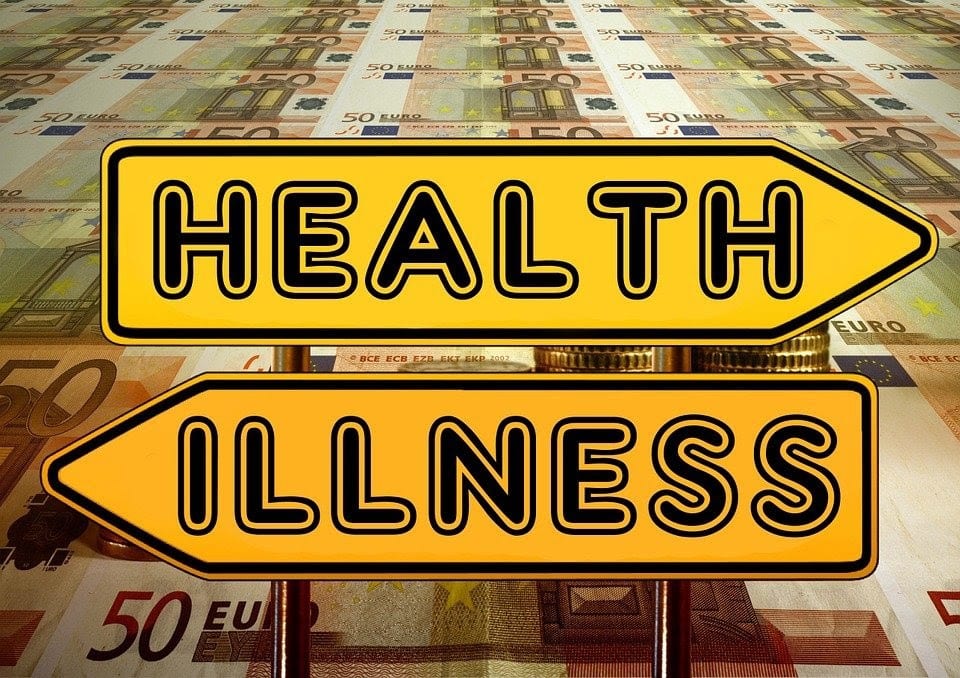Connection Between Nutrition & Disease
In the book Nutrition: Concepts and Controversies (14th ed.) by Sizer and Whitney (2016), they define food as:
“Medically, any substance that the body can take-in, and assimilate that will enable it to stay alive and to grow; the carrier of nourishment; socially, a more limited number of such substances defined as acceptable by each culture.”
And define nutrition as:
“The study of the nutrients in foods and in the body; sometimes also the study of human behaviors related to food.”
There is a clear scientific explanation of food and nutrition, but, interestingly, we can not define either without human behavior or culture. When anyone approaches the topic of food, nutrition, or diet, they immediately evoke feelings and cravings, which may contradict what is genuinely needed for the physical body to function. Malnutrition is deficiencies or excesses of nutrients, and if one’s feelings of food over time affect what is medically necessary for the body to function, then that is when malnutrition can lead to chronic medical conditions.
Of the many chronic medical conditions, cardiovascular disease is number one, and in the United States, one in three Americans dies from cardiovascular disease (Powers, 2017). When nutrient intake is balanced and lifestyle behavior includes physical activity such as engaging in as little as 30 minutes a day of exercise training, we can reduce the chances of a heart attack by 60% (Powers, 2017).
WHAT ARE SOME CONSEQUENCES OF INADEQUATE OR IMPROPER NUTRITION?
“A well-chosen diet supplies enough energy and enough of each nutrient to prevent malnutrition. Malnutrition includes deficiencies, imbalances, and excesses of nutrients, alone or in combination, any of which can take a toll on health over time”(Sizer & Whitney, 2016).
Diets high in saturated fat, salt, and calories can lead to obesity, contributing to diseases like cancer, hypertension, and cardiovascular disease. Diets high in trans fat can cause plaques to form on the artery walls and causes damage, hardening, and narrowing of the artery walls as well(Colbert et al., 2019a).
Altering or modifying diet and lifestyle can lower risk factors like high blood cholesterol, hypertension, and diabetes. To minimize the risks of hypertension, cancer, and cardiovascular disease, limit sodium, trans-fats, alcohol, and adopt a diet resembling a Mediterranean diet with lower starchy foods and higher fiber intake (Sizer & Whitney, 2016). Most people can prevent many debilitating or chronic conditions by learning and implementing nutritional principles. Over-the-road truck drivers, such as myself, are at risk for cardiovascular disease, diabetes, sleep apnea, and more. These could all be prevented by providing our bodies with a high nutrient diet with high-quality calories to counter the damage from hours of sedentary behavior. Diet is a massive factor in altering chronic conditions, but lifestyle adjustments must also be applied and assist a diet.
PHYSICAL ACTIVITY & NUTRITION GO HAND-IN-HAND WITH REGARD TO MAINTAINING A HEALTHY LIFESTYLE
Lifestyle, genetics, environment, and healthcare are the four factors that most influence health. Lifestyle has the most significant impact on health as 53% of all diseases are due to lifestyle behavior (Powers and Dodd (2017). A great example of how nutrition and physical activity benefit from one another and fail apart is the protein to a muscle-gain relationship. Attempting to eat an abundance of protein and do a hard workout will not provide significant muscle gains because there is a protein-building limit. However, the repetitive combination of fitness and consumption of protein causes a net muscle gain over time. It is common knowledge that a healthy lifestyle includes physical activity. People who participate in an active life feel happier, have a higher cognitive function, lower chronic disease, a higher functioning body, and live longer. People who regularly engage in moderate physical activity live longer, healthier lives on average than those who are physically inactive, and despite the well-known health benefits of physical activity, only 20% of American adults meet the activity guidelines (Sizer & Whitney, 2016).
In a section of a documentary by HBODocs (2012), multiple examples of lifestyles are shared, but one story about diabetes stuck out. Twin brothers, one has diabetes the other does not; the shocking difference between the two is that the one with diabetes just gave up and did not take being diabetic seriously. The non-diabetic brother decided to think of his brothers’ health problems as a warning for himself. This early action kept him from getting diabetes like his twin. This story is a clear example of how impactful lifestyle behavior choices can be for anyone predisposed to chronic disease.
Stay MOTOvated!! Live MOTOvated!!
References
Sizer, F., & Whitney, E. (2016). Nutrition: Concepts and Controversies — Standalone book (14th ed.). Cengage Learning. https://content.ashford.edu/books/Sizer.2199.17.1
Colbert, B., Ankney, J., & Lee, K. (2019a). Anatomy, Physiology, & Disease: An Interactive Journey for Health Professionals (3rd ed.) [E-book]. Pearson. https://etext-ise.pearson.com/products
HBODocs. (2012, May 14). The Weight of the Nation: Part 2 — Choices (HBO Docs) [Video]. YouTube. https://www.youtube.com/watch?v=hLv0Vsegmoo&feature=youtu.be
Connection Between Nutrition & Disease Read More »




